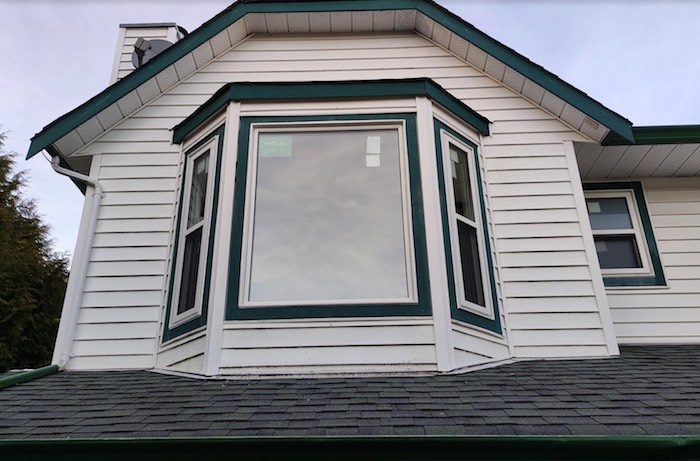Business
When it’s time to consider new windows, here’s what you need to know

Replacement Windows vs. New-Construction Windows – What Should I Get?
If installing new windows for your home is on your 2022 to-do list, there are two routes you can take. Either you can get new construction or replacement windows. The type you choose depends upon several factors, such as your house, current windows, and their condition.
If you are new to home renovation, you must wonder what the difference is between replacement and new construction windows. Keep reading to learn everything about both types and where to buy windows that work best for your house.
What are replacement windows?
As the name suggests, these windows basically replace your house’s old windows using the existing rough openings. They are usually custom-made to fit easily into the current frame.
Replacement windows are comparatively easy to install than construction windows as they require minimal work, which can be done without touching the trims or the insulation around the window.
What are construction windows?
New construction windows are typically used for newly constructed homes or other new constructions, like a home extension. This does not imply that they can only be used for newly built homes. In some situations, such as intense remodelling or repairing badly damaged existing structures, replacing old windows with new construction windows is the best option.
Replacement windows and construction windows are available in various styles, finishes, and materials. So you can pretty much find a style that goes well with your home based on whichever window is right for your home.
When should I use replacement windows?
Replacement windows are a good choice if your window frames are in good condition and you’re ready to invest in new energy-efficient windows. Generally, these units are used when the wall has already been constructed and cannot be significantly altered. These windows are ideal when:
- you are replacing an existing window
- you want the wall to stay in its place as much as possible
- the window is not going to be used for a new building
- you want to get the same window style but modern and energy-efficient
When should I use new-construction windows?
Replacement windows are not the ideal option if the window frames in your current home are damaged. In that case, you would need to remove the existing frame. Installing new construction windows is the ideal solution in such a situation. In addition, new construction windows are suitable when:
- you are building a new house
- you are planning an extension in your house
- the wall is being rebuilt
- the wall is damaged and needs major repairing
Whether you should opt for replacement or new-construction windows depends upon several factors, as mentioned above. However, keep in mind that construction windows are standard-sized windows. So you cannot just plug them into any opening where an existing window was removed from, even if they appear to be the exact same size as the old window.
Which one is more cost-effective?
When it comes to installing new windows in your home, replacement windows are generally the least expensive option. Because these windows are inserted in existing frames, they typically require less labour making them more affordable. The price for a replacement window may start from $300 per unit and rise depending on the custom features you choose, such as:
- Frame material. Vinyl here is the most affordable, while wood is the most expensive.
- Hardware. You can choose standard or opt for elite hardware, customizing locks, handles, etc., to match your preferences.
- Colour. White, Black or other basic colours will not significantly affect the price. Still, if you want custom shades to complement your exterior and interior, you should expect a price change of around 15%.
- Glazing. The current standard is double pane windows, but if you live in cold regions, triple pane windows would be a better choice. But the price for these units may be up to 20% higher depending on the glazing and LoE coating you choose.
Initially, the price of new-construction windows may appear less, but it truly relies on the type and number of windows you order. Since they are standard size, they are produced in large volumes and hence available at a lower price.
However, the price can significantly increase when you consider the cost of replacing the current window frame and repairing the surrounding interior and exterior walls.
But installing construction windows can prove to be the most acceptable alternative and the best investment if you’re installing windows in new construction or your current window frames are in poor condition.
Where to buy new windows for your house?
Due to a large number of Red Deer window companies in the market today, you will have several options at various price ranges.
To help you pick the best option for your house, we advise dealing with experienced professionals that offer Energy Star-rated windows, free quotes & consultation and qualified in-house installers to ensure correct installation and maximum energy efficiency for your new windows.
Final thoughts
If you are about to install new windows, choosing whether to get replacement windows or new construction windows is a decision you must make very carefully.
A new construction window may be a good option in situations like an extension to your home or building a new home.
However, a replacement window will be more suitable if you plan to replace your existing windows, not changing rough openings and window styles. Opting for custom-made replacement windows means saving yourself a lot of time, hassle, and money in the future.
Business
Federal government’s ‘fudget budget’ relies on fanciful assumptions of productivity growth

From the Fraser Institute
By Niels Veldhuis and Jake Fuss
Labour productivity isn’t growing, it’s declining. And stretching the analysis over the Trudeau government’s time in office (2015 to 2023, omitting 2020 due to COVID), labour productivity has declined by an average of 0.8 per cent. How can the Trudeau government, then, base the entirety of its budget plan on strong labour productivity growth?
As the federal budget swells to a staggering half a trillion dollars in annual spending—yes, you read that correctly, a whopping $538 billion this year or roughly $13,233 per Canadian—and stretches over 430 pages, it’s become a formidable task for the media to dissect and evaluate. While it’s easy to spot individual initiatives (e.g. the economically damaging capital gains tax increase) and offer commentary, the sheer scale and complexity of the budget make it hard to properly evaluate. Not surprisingly, most post-budget analysts missed a critically important assumption that underlies every number in the budget—the Liberals’ assumption of productivity growth.
Indeed, Canada is suffering a productivity growth crisis. “Canada has seen no productivity growth in recent years,” said Carolyn Rogers, senior deputy governor at the Bank of Canada, in a recent speech. “You’ve seen those signs that say, ‘In emergency, break glass.’ Well, it’s time to break the glass.”
The media widely covered this stark warning, which should have served as a wake-up call, urging the Trudeau government to take immediate action. At the very least, this budget’s ability—or more accurately, inability—to increase productivity growth should have been a core focus of every budget analysis.
Of course, the word “productivity” puts most people, except die-hard economists, to sleep. Or worse, prompts the “You just want us to work harder?” questions. As Rogers noted though, “Increasing productivity means finding ways for people to create more value during the time they’re at work. This is a goal to aim for, not something to fear. When a company increases productivity, that means more revenue, which allows the company to pay higher wages to its workers.”
Clearly, labour productivity growth remains critical to our standard of living and, for governments, ultimately determines the economic growth levels on which they base their revenue assumptions. With $538 billion in spending planned for this year, the Trudeau government better hope it gets its forecasts right. Otherwise, the $39.8 billion deficit they expect this year could be significantly higher.
And here’s the rub. Buried deep in its 430-page budget is the Trudeau government’s assumption about labour productivity growth (page 385, to be exact). You see, the Liberals assume the economy will grow at an average of 1.8 per cent over the next five years (2024-2028) and predict that half that growth will come from the increase in the supply of labour (i.e. population growth) and half will come from labour productivity growth.
However, as the Bank of Canada has noted, labour productivity growth has been non-existent in Canada. The Bank uses data from Statistics Canada to highlight the country’s productivity, and as StatsCan puts it, “On average, over 2023, labour productivity of Canadian businesses fell 1.8 per cent, a third consecutive annual decline.”
In other words, labour productivity isn’t growing, it’s declining. And stretching the analysis over the Trudeau government’s time in office (2015 to 2023, omitting 2020 due to COVID), labour productivity has declined by an average of 0.8 per cent. How can the Trudeau government, then, base the entirety of its budget plan on strong labour productivity growth? It’s what we call a “fudget budget”—make up the numbers to make it work.
The Trudeau fudget budget notwithstanding, how can we increase productivity growth in Canada?
According to the Bank of Canada, “When you compare Canada’s recent productivity record with that of other countries, what really sticks out is how much we lag on investment in machinery, equipment and, importantly, intellectual property.”
Put simply, to increase productivity we need businesses to increase investment. From 2014 to 2022, Canada’s inflation-adjusted business investment per worker (excluding residential construction) declined 18.5 per cent from $20,264 to $16,515. This is a concerning trend considering the vital role investment plays in improving economic output and living standards for Canadians.
But the budget actually hurts—not helps—Canada’s investment climate. By increasing taxes on capital gains, the government will deter investment in the country and encourage a greater outflow of capital. Moreover, the budget forecasts deficits for at least five years, which increases the likelihood of future tax hikes and creates more uncertainty for entrepreneurs, investors and businesses. Such an unpredictable business environment will make it harder to attract investment to Canada.
This year’s federal budget rests on fanciful assumptions about productivity growth while actively deterring the very investment Canada needs to increase living standards for Canadians. That’s a far cry from what any reasonable person would call a successful strategy.
Authors:
Alberta
Alberta government should create flat 8% personal and business income tax rate in Alberta

From the Fraser Institute
By Tegan Hill
If the Smith government reversed the 2015 personal income tax rate increases and instituted a flat 8 per cent tax rate, it would help restore Alberta’s position as one of the lowest tax jurisdictions in North America
Over the past decade, Alberta has gone from one of the most competitive tax jurisdictions in North America to one of the least competitive. And while the Smith government has promised to create a new 8 per cent tax bracket on personal income below $60,000, it simply isn’t enough to restore Alberta’s tax competitiveness. Instead, the government should institute a flat 8 per cent personal and business income tax rate.
Back in 2014, Alberta had a single 10 per cent personal and business income tax rate. As a result, it had the lowest top combined (federal and provincial/state) personal income tax rate and business income tax rate in North America. This was a powerful advantage that made Alberta an attractive place to start a business, work and invest.
In 2015, however, the provincial NDP government replaced the single personal income tax rate of 10 percent with a five-bracket system including a top rate of 15 per cent, so today Alberta has the 10th-highest personal income tax rate in North America. The government also increased Alberta’s 10 per cent business income tax rate to 12 per cent (although in 2019 the Kenney government began reducing the rate to today’s 8 per cent).
If the Smith government reversed the 2015 personal income tax rate increases and instituted a flat 8 per cent tax rate, it would help restore Alberta’s position as one of the lowest tax jurisdictions in North America, all while saving Alberta taxpayers $1,573 (on average) annually.
And a truly integrated flat tax system would not only apply a uniform tax 8 per cent rate to all sources of income (including personal and business), it would eliminate tax credits, deductions and exemptions, which reduce the cost of investments in certain areas, increasing the relative cost of investment in others. As a result, resources may go to areas where they are not most productive, leading to a less efficient allocation of resources than if these tax incentives did not exist.
Put differently, tax incentives can artificially change the relative attractiveness of goods and services leading to sub-optimal allocation. A flat tax system would not only improve tax efficiency by reducing these tax-based economic distortions, it would also reduce administration costs (expenses incurred by governments due to tax collection and enforcement regulations) and compliance costs (expenses incurred by individuals and businesses to comply with tax regulations).
Finally, a flat tax system would also help avoid negative incentives that come with a progressive marginal tax system. Currently, Albertans are taxed at higher rates as their income increases, which can discourage additional work, savings and investment. A flat tax system would maintain “progressivity” as the proportion of taxes paid would still increase with income, but minimize the disincentive to work more and earn more (increasing savings and investment) because Albertans would face the same tax rate regardless of how their income increases. In sum, flat tax systems encourage stronger economic growth, higher tax revenues and a more robust economy.
To stimulate strong economic growth and leave more money in the pockets of Albertans, the Smith government should go beyond its current commitment to create a new tax bracket on income under $60,000 and institute a flat 8 per cent personal and business income tax rate.
Author:
-

 Housing2 days ago
Housing2 days agoTrudeau’s 2024 budget could drive out investment as housing bubble continues
-

 Alberta2 days ago
Alberta2 days agoAlberta government should create flat 8% personal and business income tax rate in Alberta
-

 Censorship Industrial Complex1 day ago
Censorship Industrial Complex1 day agoDesperate Liberals move to stop MPs from calling Trudeau ‘corrupt’
-

 National2 days ago
National2 days agoLow and middle income Canadians hit hardest by high marginal effective tax rates
-

 Great Reset2 days ago
Great Reset2 days agoTerrorists Welcome: Chronic counterterrorism lapses at the border demand investigation
-

 Health17 hours ago
Health17 hours agoTransgender activists are threatening the author of scathing UK report on child ‘sex changes’
-

 conflict2 days ago
conflict2 days agoCol. Douglas Macgregor: US is ‘facing disaster’ as it funds overseas wars while bankrupt
-

 Energy2 days ago
Energy2 days agoA Wealth-Creating Way of Reducing Global CO2 Emissions









